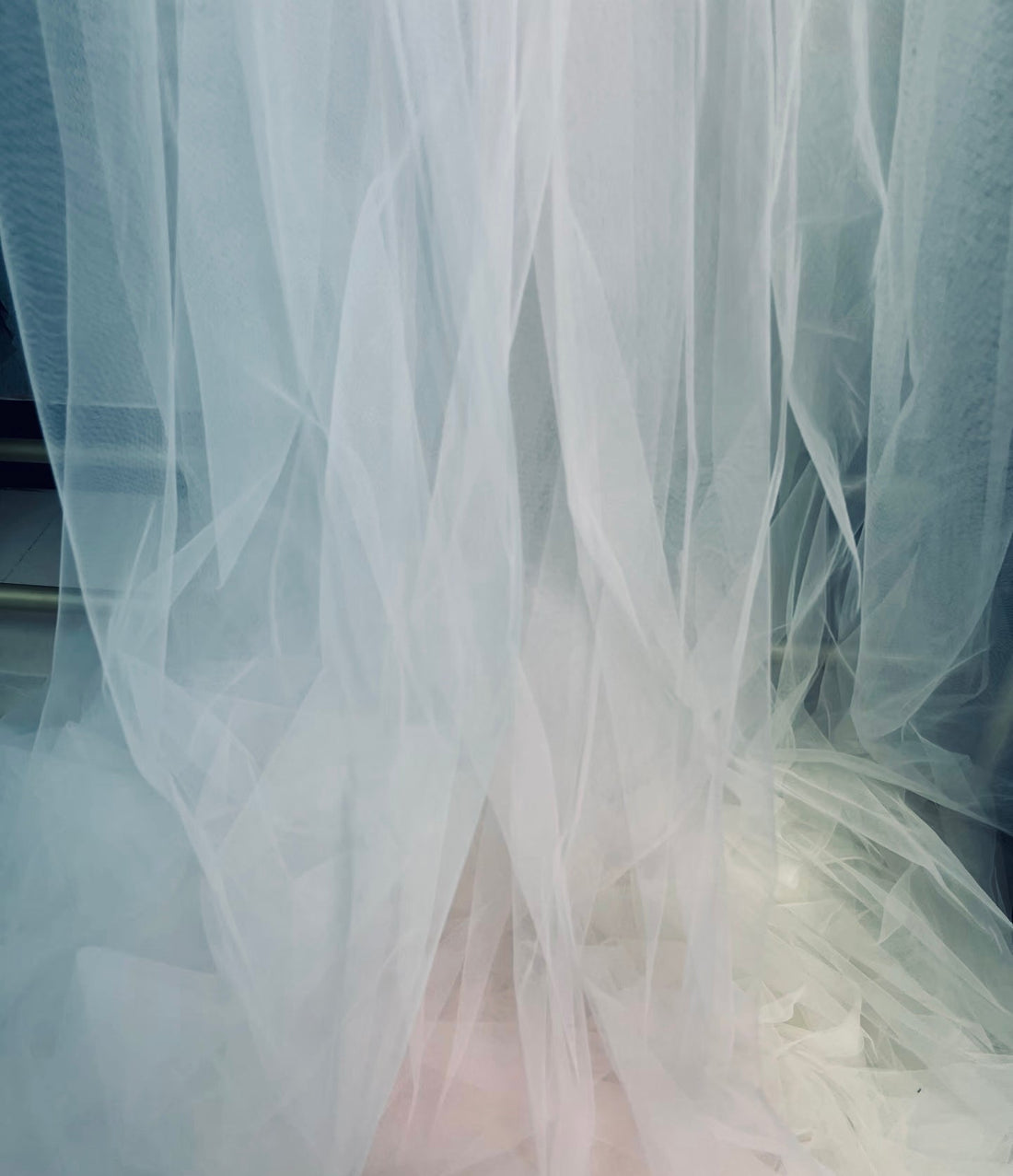
Tulle Fabric: The Ethereal Netting That Defines Romance and Art
What Is Tulle Fabric?
Tulle fabric is a fine, lightweight netting known for its airy transparency and soft shimmer.
Made from silk, nylon, or polyester, it originated from the French city of Tulle, where the material was first woven in the 18th century. Its delicate mesh structure allows it to capture light beautifully — making it a favorite in fashion, interior design, and even contemporary art.
Today, tulle fabric is synonymous with femininity, fantasy, and volume.
From the soft layers of a ballet tutu to the floating veils in wedding couture, tulle embodies lightness and dreamlike texture.
Types of Tulle: From Soft to Structured
Not all tulle fabrics are created equal. Depending on its fiber and weave tightness, tulle can feel silky and drapey or stiff and voluminous.
- Silk Tulle – Luxurious and ultra-soft, ideal for high-end bridal veils and couture gowns.
- Nylon Tulle – Lightweight and crisp; holds shape beautifully in layered skirts.
- Polyester Tulle – Budget-friendly, durable, and available in a vast range of colors.
- Stretch Tulle – Blended with spandex for performance costumes and body-fit designs.
When choosing tulle fabric, consider your purpose: a soft tulle for romantic drapes, or a stiff version for sculptural silhouettes.
Tulle vs. Organza vs. Mesh: What’s the Difference?
While all three fabrics have a translucent appearance, they serve very different purposes:
- Tulle has a hexagonal net pattern and a soft bounce, perfect for adding volume without heaviness.
- Organza is smoother and more structured — often used for dramatic gowns or interior drapery.
- Mesh fabric is coarser and more open, used in sportswear or utility garments.
👉 Learn more about other types of fabrics in our Woven Fabric Guide, or explore specialty textures like Chenille and Linen.
5 Creative Uses for Tulle Fabric
- Bridal & Veils – The most iconic use of tulle, symbolizing purity and ethereal beauty.
- Ballet & Stage Costumes – Tulle creates the volume and floating effect dancers love.
- Evening Wear & Avant-Garde Fashion – Designers layer tulle for transparency and drama.
- Event Decoration – Perfect for table overlays, chair bows, and backdrops.
- Art & Installations – In contemporary art, tulle’s dreamlike translucence makes it ideal for exploring themes of illusion, memory, and femininity.
In recent years, many visual artists have used tulle fabric for its misty, surreal quality, turning it into a medium for sculptural forms and immersive installations — blurring the line between fashion and fine art.
How to Sew and Care for Tulle Fabric
Because of its delicate netting, tulle requires gentle handling:
- Use fine needles (size 70/10) and a short stitch length to prevent snags.
- Avoid pins — use clips or fabric weights when cutting.
- For volume, layer multiple pieces instead of gathering too tightly.
- Wash tulle gently by hand in cold water and hang to air-dry; heat can melt synthetic fibers.
- Store flat or rolled to prevent permanent creases.
Color Trends: Dreamy Shades and Modern Interpretations
Tulle isn’t limited to classic white or blush anymore. Designers now embrace vibrant colors, gradients, and even tie-dyed versions to reflect individuality. Pale lilacs, muted blues, and dusty pinks continue to dominate wedding and fashion palettes — echoing serenity and nostalgia.
For a deeper dive into the emotional meaning of tones and fabric dyes, explore our article on the Indigo Color Meaning and Trend.
Tulle fabric has evolved far beyond its origins in ballet and bridal wear.
Today, it represents freedom, texture, and transformation — weaving together softness and strength.
Whether you’re designing garments, decorating a space, or experimenting with artistic forms, tulle remains the quintessential fabric for creating dreamlike volume and poetic light.
FAQs About Tulle Fabric
1. What is tulle fabric made of?
Tulle can be woven from silk, nylon, or polyester. Each material offers a different texture and drape.
2. Is tulle the same as net fabric?
No. Tulle is a finer, softer version of netting, while net fabric tends to be coarser and more utilitarian.
3. Can tulle be dyed at home?
Yes — nylon and silk tulles absorb dye well. Polyester tulle, however, often resists regular fabric dyes.
4. How do I stop tulle from fraying or tearing?
Use sharp scissors and avoid over-stretching. Edges can be lightly heat-sealed for synthetic versions.
5. What is tulle used for in modern design?
Beyond fashion, tulle appears in visual art, installations, and set designs to evoke lightness and surreal emotion.

